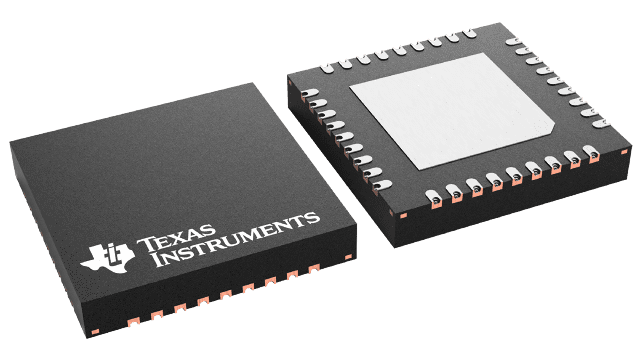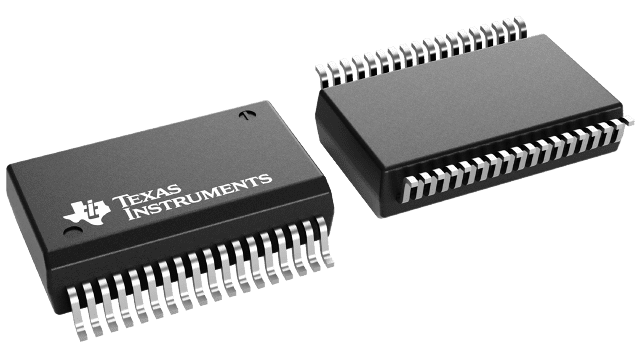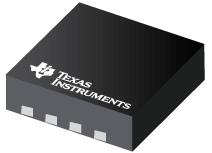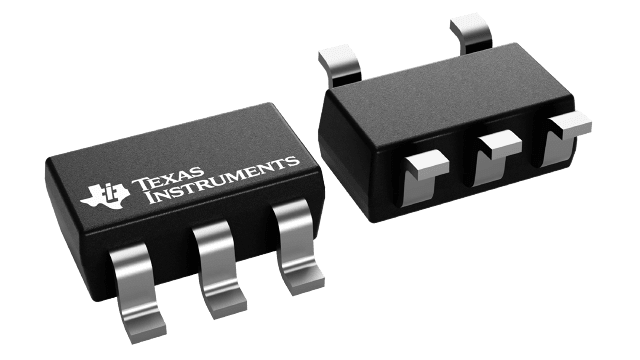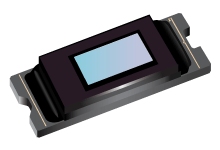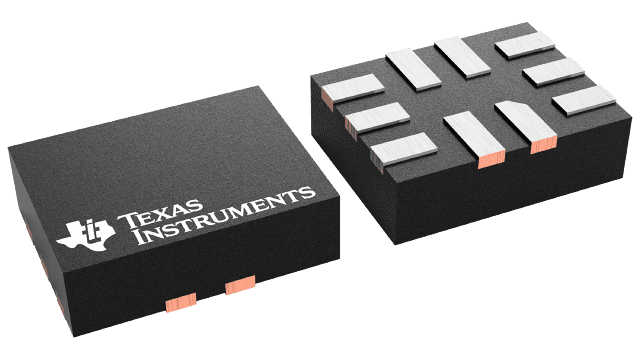Driving forward the vehicles of tomorrow
Electronic systems constituted as little as one percent of the total value in the cars of the past. Now, increased technological capabilities and consumer demand for more technology in vehicles have caused a surge in the number of electronic control units (ECUs) in a vehicle. A highly engineered automobile may contain as many as 100 ECUs and up to 100 million lines of code - a far cry of the vehicles of the past and a testament to how important ECUs are to a car’s makeup.
Add to this the rise of the Internet of Things (IoT), the increase in connectivity, the emerging environment of the smart city, the growth in electric vehicles (EVs), and the inevitable march towards autonomous driving, and it’s easy to see why the electronic systems in the cars of tomorrow will represent the vast majority of the vehicle’s infrastructure.
Electricity is increasingly replacing manual and motorised components, powering advanced electronics and fuelling hybrid (HEV) and EVs while reducing CO2 emissions. As a result, the future of driving will look very different from transportation today. Cities will be filled with emission optimised HEVs and self-driven, zero-emission EVs that communicate within the vehicle’s systems and with roadway infrastructure and other vehicles.
Read the white paper, “Driving the Green Revolution in Transportation” from Texas Instruments (TI).
The major factors driving a surge in demand for HEVs and EVs are environment regulatory pressures on internal combustion engines (ICEs), technological improvements in electric powertrains and batteries and drivers’ expectations for features of convenience and infotainment.
However, the increasing power-load requirements of these innovations are pushing the capacity limits of the traditional 12-V lead acid battery. To meet the demand for electrification, automakers and their suppliers have developed a second electrical system at 48 V, which delivers than a traditional 12V battery can produce alone. Within high voltage systems, extensive isolations for safety and insulation control are paramount to keeping drivers and passengers safe from electric shock and to avoiding system safety breakdown.
Below are a selection of solutions that help in overcoming these design challenges and enabling system requirements for a safer, more efficient mode of transportation.
TIDAs
TIDA-03040: This shunt-based current sensor reference design provides an accuracy of < 0.2% FSR over a temperature range of -40°C to +125°C. Precision current sensing is essential in a number of automotive applications, including battery management systems, motor currents, and others. Generally, non-linearity, temperature drift, shunt tolerances in these locations can cause poor accuracy results. This design solves these problems by using TI’s current shunt monitors and signal conditioners (INA240, PGA400-Q1).
TIDA-03050: This reference design shows how to detect current from the mA-to-KA range using a busbar-type shunt resistor. The increasing demand of high-capacity batteries in electric vehicles (EVs) and hybrid electric vehicles (HEVs) drives the requirement for larger current spans and highly-accurate current sensors. Obtaining a good accuracy over three decades (mA to A, 1A to 100A, and 100A to 1,000A) is quite challenging due to large amounts of noise in the system. This design solves this problem by using a high resolution analogue-to-digital converter (ADC) and high-accuracy current shunt monitors from TI.
TIDA-01604: This reference design functions from a base of silicon carbide (SiC) MOSFETs that is driven by a C2000 microcontroller (MCU) with SiC-isolated gate drivers. The design implements 3-phase interleaving and operates in continuous conduction mode (CCM) to achieve a 98.46% efficiency at a 240V input voltage and 6.6kW full power. The C2000 controller enables phase shedding and adaptive dead-time control to improve the power factor at light load. The gate driver board (see TIDA-01605) is capable of delivering a 4A source and 6A sink peak current. The gate driver board implements a reinforced isolation and can withstand more than 100V/ns common-mode transient immunity (CMTI). The gate driver board also contains the two-level turn-off circuit, which protects the MOSFET from voltage overshoot during the short-circuit scenario.
TIDA-01605: This reference design is an automotive qualified isolated gate driver solution for driving Silicon Carbide (SiC) MOSFETs in half bridge configuration. The design includes two push pull bias supplies for the dual channel isolated gate driver respectively and each supply provides +15V and -4V output voltage and 1W output power. The gate driver is capable of delivering 4A source and 6A sink peak current. It implements reinforced isolation and can withstand 8kV Peak and 5.7kV RMS isolation voltage and >100V/ns common mode transient immunity (CMTI).
The reference design contains the two-level turn-off circuit which protects the MOSFET from voltage overshoot during the short circuit scenario. The DESAT detection threshold and the delay time for second stage turn-off are configurable. The ISO7721-Q1 digital isolator is implemented for interfacing the signals of fault and reset. All designed on a two layer PCB board with a compact form factor of 40×40mm.
TIDA-01168:The TIDA-01168 reference design is a 4-phase, bidirectional DC-DC converter development platform for 12V/48V automotive systems. The system uses two LM5170-Q1 current controllers and a TMS320F28027F microcontroller (MCU) for the power stage control. LM5170-Q1 subsystems use average current feedback for current control whereas the C2000 microcontroller provides voltage feedback. Such a control scheme eliminates phase current balancing typical for multiphase converters. A system based on LM5170-Q1 allows a high level of integration, which reduces printed-circuit board (PCB) area, simplifies design, and speeds up development.
Products
ISO7731-Q1: The ISO773x-Q1 devices are high performance, triple-channel digital isolators with 5,000VRMS (DW package) and 3000VRMS (DBQ package) isolation ratings per UL 1577.
This family of devices has reinforced insulation ratings according to VDE, CSA, TUV and CQC. The ISO773x-Q1 family of devices provides high electromagnetic immunity and low emissions at low power consumption, while isolating CMOS or LVCMOS digital I/Os. Each isolation channel has a logic input and output buffer separated by a silicon dioxide (SiO2) insulation barrier.
This device comes with enable pins which can be used to put the respective outputs in high impedance for multi-master driving applications and to reduce power consumption. The ISO7730-Q1 device has all three channels in the same direction and the ISO7731-Q1 device has two forward and one reverse-direction channel. If the input power or signal is lost, the default output is high for devices without suffix F and low for devices with suffix F. See the Device Functional Modes section for further details.
UCC21520-Q1 : The UCC21520-Q1 is an isolated dual-channel gate drivers with 4A source and 6A sink peak current. It is designed to drive power MOSFETs, IGBTs, and SiC MOSFETs up to 5MHz with best-in-class propagation delay and pulse-width distortion.
The input side is isolated from the two output drivers by a 5.7kVRMS reinforced isolation barrier, with a minimum of 100V/ns common-mode transient immunity (CMTI). Internal functional isolation between the two secondary-side drivers allows a working voltage of up to 1,500VDC.
Every driver can be configured as two low-side drivers, two high-side drivers, or a half-bridge driver with programmable dead time (DT). A disable pin shuts down both outputs simultaneously, and allows normal operation when left open or grounded. As a fail-safe measure, primary-side logic failures force both outputs low.
UCC21222-Q1:The UCC21222-Q1 device is an isolated dual channel gate driver with programmable dead time and wide temperature range. This device exhibits consistent performance and robustness under extreme temperature conditions. It is designed with 4A peak-source and 6A peak-sink current to drive power MOSFET, IGBT, and GaN transistors.
The UCC21222-Q1 device can be configured as two low-side drivers, two high-side drivers, or a half-bridge driver. 5ns delay matching performance allows two outputs to be paralleled, doubling the drive strength for heavy load conditions without risk of internal shoot-through.
The input side is isolated from the two output drivers by a 3.0kVRMS isolation barrier, with a minimum of 100V/ns common-mode transient immunity (CMTI).
LM5170-Q1: The LM5170-Q1 controller provides the essential high voltage and precision elements of a dual-channel bidirectional converter for automotive 48V and 12V dual battery systems. It regulates the average current flowing between the high voltage and low voltage ports in the direction designated by the DIR input signal. The current regulation level is programmed through analogue or digital PWM inputs.
Dual-channel differential current sense amplifiers and dedicated channel current monitors achieve typical current accuracy of one percent. Robust 5A half-bridge gate drivers are capable of driving parallel MOSFET switches delivering 500W or more per channel. The diode emulation mode of the synchronous rectifiers prevents negative currents but also enables discontinuous mode operation for improved efficiency with light loads. Versatile protection features include cycle-by-cycle current limiting, overvoltage protection at both HV and LV ports, MOSFET failure detection and over temperature protection.
INA301-Q1:The INA301-Q1 includes both a high common-mode, current-sensing amplifier and a high-speed comparator configured to provide overcurrent protection by measuring the voltage developed across a current-sensing or current-shunt resistor and comparing that voltage to a defined threshold limit. This device features an adjustable limit-threshold range that is set using a single external limit-setting resistor. This current-shunt monitor measures differential voltage signals on common-mode voltages that can vary from 0V up to 36V, independent of the supply voltage.
The open-drain alert output can be configured to operate in either a transparent mode, where the output status follows the input state, or in a latched mode, where the alert output is cleared when the latch is reset. The device alert response time is under 1µs, allowing for quick detection of overcurrent events.
INA240-Q1:The INA240-Q1 device is an automotive-qualified, voltage-output, current-sense amplifier with enhanced PWM rejection that can sense drops across shunt resistors over a wide common-mode voltage range from -4V to 80V, independent of the supply voltage. The negative common-mode voltage allows the device to operate below ground, accommodating the flyback period of typical solenoid applications. Enhanced PWM rejection provides high levels of suppression for large common-mode transients (ΔV/Δt) in systems that use pulse width modulation (PWM) signals (such as motor drives and solenoid control systems). This feature allows for accurate current measurementswithout large transients and associated recovery ripple on the output voltage.
This device operates from a single 2.7V to 5.5V power supply, drawing a maximum of 2.4mA of supply current. Four fixed gains are available: 20V/V, 50V/V, 100V/V, and 200 V/V. The low offset of the zero-drift architecture enables current sensing with maximum drops across the shunt as low as 10mV full-scale. Grade 1 versions are specified over the extended operating temperature range (–40°C to +125°C) and are offered in an 8-pin TSSOP and 8-pin SOIC packages. Grade 0 versions are specified over the extended operating temperature range (-40°C to +150°C) and are offered in an 8-pin SOIC package.
AMC1305M05-Q1:The AMC1305-Q1 device is a precision, delta-sigma (ΔΣ) modulator with the output separated from the input circuitry by a capacitive double isolation barrier that is highly resistant to magnetic interference. This barrier is certified to provide reinforced isolation of up to 7,000VPEAK according to the DIN V VDE V 0884-10, UL1577, and CSA standards. Used in conjunction with isolated power supplies, the device prevents noise currents on a high common-mode voltage line from entering the local system ground and interfering with or damaging low voltage circuitry.
The AMC1305-Q1 is optimised for direct connection to shunt resistors or other low voltage level signal sources and supports excellent dc and ac performance. Shunt resistors are typically used to sense currents in traction inverters, onboard chargers, or other such automotive applications. By using an appropriate digital filter (that is, as integrated on the TMS320F2837x) to decimate the bit stream, the device can achieve 16-bits of resolution with a dynamic range of 85dB (13.8 ENOB) at a data rate of 78kSPS.
TMS320F28069M:The F2806x Piccolo family of microcontrollers (MCUs) provides the power of the C28x core and CLA coupled with highly integrated control peripherals in low pin-count devices. This family is code-compatible with previous C28x-based code, and also provides a high level of analogue integration.
An internal voltage regulator allows for single-rail operation. Enhancements have been made to the HRPWM module to allow for dual-edge control (frequency modulation). Analogue comparators with internal 10-bit references have been added and can be routed directly to control the ePWM outputs. The ADC converts from 0 to 3.3-V fixed full-scale range and supports ratio-metric VREFHI/VREFLO references. The ADC interface has beenoptimised for low overhead and latency.
ISO1042-Q1: The ISO1042-Q1 device is a galvanically-isolated controller area network (CAN) transceiver that meets the specifications of the ISO11898-2 (2016) standard. The ISO1042-Q1 device offers ±70V DC bus fault protection and ±30V common-mode voltage range. The device supports up to 5-Mbps data rate in CAN FD mode allowing much faster transfer of payload compared to classic CAN. This device uses a silicon dioxide (SiO2) insulation barrier with a withstand voltage of 5,000VRMS and a working voltage of 1,060VRMS.
Electromagnetic compatibility has been significantly enhanced to enable system-level ESD, EFT, surge, and emissions compliance. Used in conjunction with isolated power supplies, the device protects against high voltage, and prevents noise currents from the bus from entering the local ground. The ISO1042-Q1 device is available for both basic and reinforced isolation (see Reinforced and Basic Isolation Options). The ISO1042-Q1 device supports a wide ambient temperature range of -40°C to +125°C. The device is available in the SOIC-16 (DW) package and a smaller SOIC-8 (DWV) package.



